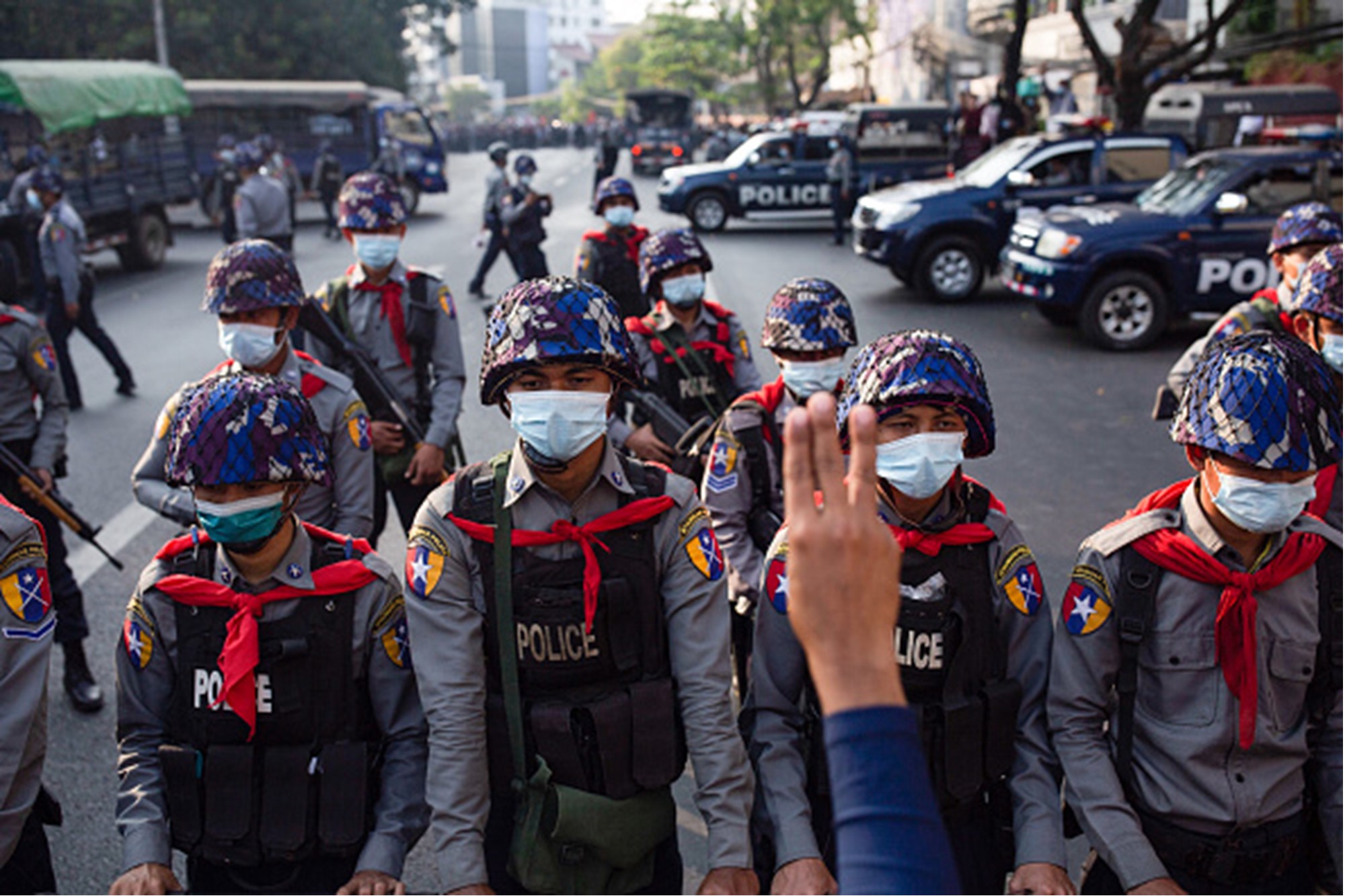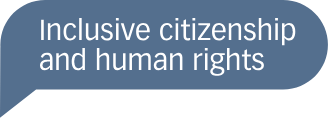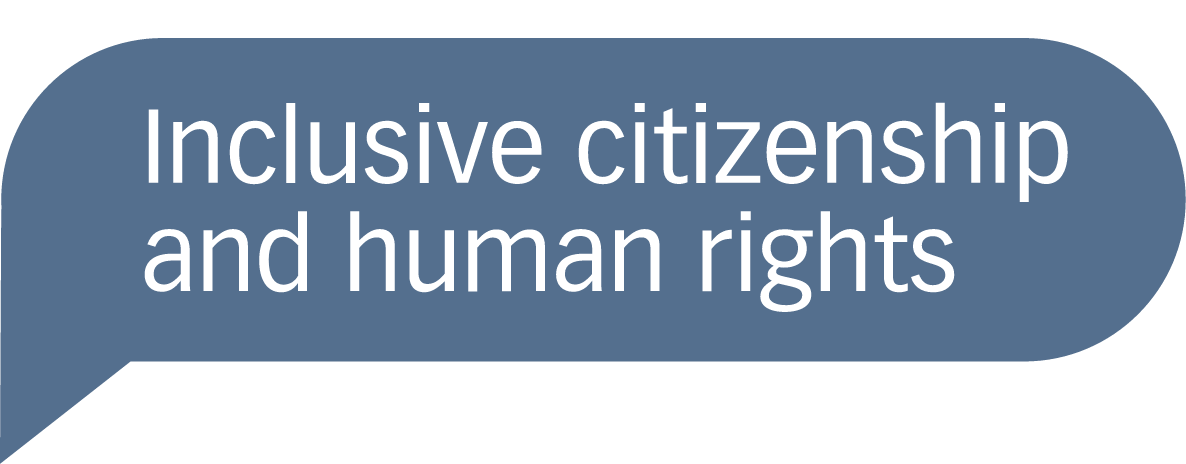
Mass atrocities are a result of deliberate planning and preparation. By monitoring and identifying risks and warning signs, atrocity crimes can be predicted and prevented.
Prevention requires grounded knowledge, collaboration, solid frameworks, and political will. The Responsibility to Protect (R2P) doctrine, established by the UN General Assembly in 2005, provides guidelines for preventing and responding to such crimes.
On this page, we explore various strategies and challenges to mass atrocity prevention. These include the Responsibility to Protect, risk assessment and early–warning systems, and related policy fields such as the Freedom of Religion or Belief and transitional justice.
What are the important warning signs? Interview with Karen Smith, professor at Leiden University and former special adviser to the UN Secretary General on the responsibility to protect, on mass atrocity prevention warning signs.
Atrocity prevention: risk assessment and early warning
For mass atrocities to be prevented before they happen, monitoring systems must be able to spot the dynamics and trigger factors. This is done by observing different contexts with a prevention lens, monitoring whether there is a risk of atrocities and when and how they may unfold. While the analytical tools that identify countries at risk are quite well-developed, it is much harder to predict if and when atrocities will occur.
The time has passed when politicians could say “We did not know.” Mark Lattimer on early warning.
The time has passed when politicians could say “We did not know.” Mark Lattimer
Since the early 2000’s, many researchers and institutions have developed sets of indicators to predict genocide and similar episodes of mass violence. The two main tools developed are risk assessment (RA) and early warning (EW) indicators. While often similar in goal and practice, risk assessment and early warning indicators still differ in various ways.
Risk assessments, for instance:
- Are predictive and based on previous conduct;
- Focus on state-level indicators, often using quantitative data;
- Examine structures that rarely change abruptly (political (in)stability, prior atrocities, and widespread discrimination);
- Provide an overall picture of the risk of atrocities;
- Do not specify if, when or how atrocities will occur but highlight situations where they likely could happen.
Early warning, instead:
- Are causal, grounded in current events, often focusing in-depth on high-risk cases;
- Monitor situations of insecurity or elevated risk;
- Are more dynamic, context-specific and sensitive to rapid developments;
- Focus on escalating activity, tipping points, and triggering acts or rhetoric;
- Can indicate with a higher likelihood whether and when atrocities will happen.
The Responsibility to Protect (R2P)
The Responsibility to Protect (R2P) doctrine is an attempt to answer the questions of who is supposed to prevent atrocities, how to intervene and stop them when they are occurring, and which regulations one must follow.
R2P is a global political commitment to prevent the worst forms of violence and human rights abuses, affirmed unanimously at the United Nations’ 2005 World Summit and enshrined in its Outcome Document (paragraphs 138 and 139). R2P emerged as a response to the international community’s failure to halt the atrocities committed in the Balkans and Rwanda during the 1990s, and builds on states’ pre-existing international humanitarian and human rights obligations to prevent and punish genocide, war crimes, ethnic cleansing, and crimes against humanity.
Although not legally binding per se, the R2P doctrine provides useful guidance and limitations on the scope of states’ political commitments to protect civilian populations. Its three-pillar strategy presented by the UN Secretary General in 2009 emphasizes the value of prevention and subsidiarity, underlining that states have the primary responsibility to protect their own populations. R2P exists within the boundaries of the UN security framework which generally prohibits the use of force. Forceful intervention to protect civilians can only be mandated through a UN Security Council resolution.
While focused on prevention, R2P still allows non-peaceful intervention as a last resort, making it problematic in the eyes of many due to potential interference with the internal affairs of states. Since its implementation in Libya in 2011, where a UN mandate to stop atrocities with force was overstepped and used to push for a regime change, no other implementation by force has been mandated by the Council.
The challenges to atrocity prevention and R2P
Despite the existence of frameworks and political commitments, actors in the atrocity prevention field struggle to protect civilians against atrocities, and the future of the atrocity prevention agenda and the R2P doctrine is in crisis. Here are three reasons why:
- Despite R2P’s emphasis on states’ responsibility to protect their own populations, R2P ultimately rests on the international community’s obligation to protect populations when states fail to do so. Protecting populations in other countries requires political will, and as global political tensions have grown, the UN Security Council’s ability to cooperate on human rights related issues has been paralyzed.
- Atrocity prevention and R2P have to compete with other pressing issues and balancing prevention against other core interests. As armed conflicts have increased, the attention, willingness, political interests, and resources of major powers to support atrocity prevention are being put under pressure.
- The outcomes of interventions in Iraq, Afghanistan, and Libya have significantly reduced the desire for interventionist policies internationally. While R2P clearly places primary responsibility on states and encourages many non-coercive measures, the doctrine’s inclusion of the use of force marks it as an interventionist norm in international forums.
Potential solutions to big challenges
Given the challenges to international atrocity prevention and R2P, other actors need to advance these agendas. For instance, smaller states not bound by geopolitical tensions may work as norm-entrepreneurs and promote R2P. They can do this as temporary elected members of the UN Security Council or in other arenas such as the Human Rights Council, and by applying an atrocity prevention lens in their bilateral relations and adopting national atrocity prevention strategies.
Civil society plays a crucial role in atrocity prevention. National civil society is key to building resilience against atrocities, meaning that international atrocity prevention actors should empower local resistance actors. Even so, resistance strategies for victim groups are often narrowed down to flight or armed resistance, and even that may be impossible. In such scenarios, international intervention may be needed.
Advancing the field of atrocity prevention requires connections to related agendas, such as Freedom of Religion or Belief (FoRB) and Women, Peace and Security (WPS), and strengthening documentation and accountability mechanisms.
(Read more about gender dynamics in atrocity prevention on the Mass Atrocity Responses website)
Atrocity prevention and freedom of religion or belief
Freedom of Religion or Belief (FoRB) recognizes every individual’s right to practice their religion or belief in public or in private, as expressed under Articles 18 of the Universal Declaration of Human Rights and of the International Covenant on Civil and Political Rights. It also implies that everyone should be free to convert from one faith to another without compulsion, as well as not to adhere to any religion or set of beliefs. Restrictions on FoRB and an increased targeting of groups or individuals based on their religious identity are common early symptoms of atrocities.
Women’s rights and freedom of religion or belief
In conflict situations and minority/majority power dynamics, state and non-state actors may use religion or belief systems to justify violent behavior against certain groups or to rally support for their cause. Discrimination, hostility, and social and economic exclusion are common in these scenarios, and they act as early warning indicators. The same may be the case for criminal prosecution for religious offenses, censorship, and the destruction of religious sites.
Given FoRB’s intrinsic relation to other human rights (e.g., the rights to privacy, freedom of expression, freedom of association and assembly), its systematic limitation significantly increases the risk of atrocity crimes. Monitoring how FoRB is upheld, limited or revoked allows researchers and policymakers the opportunity to address the potential risk and likelihood of atrocities.
Although progress on R2P frameworks and implementation has slowed down since the 2010s, focusing on FoRB in atrocity prevention can serve as a tool for political mobilization internationally. For instance, the UN Office on Genocide Prevention and the Responsibility to Protect targets two thematic areas: preventing the incitement to violence by engaging with religious leaders and actors and addressing and countering hate speech.
Accountability, documentation, and prevention
Tribunals, truth commissions or documentation mechanisms can be established in the aftermath of war, civil strife, or repression to address past abuses. As the UN Secretary General has stated, transitional justice mechanisms are called for “in order to ensure accountability, serve justice and achieve reconciliation.”
Transitional justice mechanisms are also useful for atrocity prevention. The Rome Statute of the ICC, for instance, hopes the Court will “put an end to impunity for the perpetrators of these crimes and thus to contribute to the prevention of such crimes”. Transitional justice and atrocity prevention are linked in multiple ways:
- They prevent the recurrence of atrocities. Research on risk factors of genocide and mass violence supports the claim that unaddressed atrocities pose an increased risk for them to happen again.
- Permanent justice mechanisms such as the International Criminal Court may deter perpetrators from committing atrocity crimes. Even so, the deterrent effect of transitional justice is questionable, as there are several gaps in the implementation of transitional and legal justice.
- Establishing or invoking mechanisms while atrocities are still ongoing spark hope that the mechanisms may help with prevention. In the International Court of Justice cases against Myanmar and Israel, the court has ordered states to protect populations against genocide long before a final decision on the existence of genocide can be delivered. Additionally, documentation mechanisms like the Fact Finding Mission and Investigative Mechanism for Myanmar can be established long before a court or tribunal can tackle a case, and in situations where atrocities are ongoing.
Additional readings
Here are more readings on atrocity prevention, the Responsibility to Protect, and their application:
- Bellamy, Alex J. 2015. “Operationalizing the ‘Atrocity Prevention Lens’: Making Prevention a Living Reality.” In Reconstructing Atrocity Prevention, eds. Sheri P. Rosenberg, Tibi Galis, and Alex Zucker. Cambridge: Cambridge University Press. chapter, 61–80. https://doi.org/10.1017/CBO9781316154632.005
- Bellamy, Alex J., and Ivan Šimonović. 2021. “Introduction: Towards Evidence Based Atrocity Prevention.” Journal of International Peacekeeping 24 (3-4): 285–304. https://doi.org/10.1163/18754112-24030001.
- Bellamy, Alex J., and Tim Dunne (eds). 2016. The Oxford Handbook of the Responsibility to Protect, Oxford: Oxford University Press. https://doi.org/10.1093/oxfordhb/9780198753841.001.0001
- Gallagher, Adrian, Blake Lawrinson, Gillian McKay, and Richard Illingworth. 2023. “The Responsibility to Protect: A Bibliography.” Global Responsibility to Protect 16 (1): 3–123. https://doi.org/10.1163/1875984x-20230012.
- Global Centre for the Responsibility to Protect, and Asia-Pacific Centre for the Responsibility to Protect. 2023. “A Framework for Action for the Responsibility to Protect: A Resource for States.” https://www.globalr2p.org/publications/a-framework-for-action-for-the-responsibility-to-protect-a-resource-for-states/.
- Harff, Barbara. 2003. “No Lessons Learned from the Holocaust? Assessing Risks of Genocide and Political Mass Murder since 1955.” American Political Science Review 97 (01): 57–73.
- Reike, Ruben. 2014. “The ‘Responsibility to Prevent’: An International Crimes Approach to the Prevention of Mass Atrocities.” Ethics & International Affairs 28 (4): 451–76. https://doi.org/10.1017/s0892679414000604
- Stensrud, Ellen Emilie, and Martin Mennecke. 2024. “On the 20th Anniversary of the Responsibility to Protect: Can Small States Save R2P from Failure and Oblivion?” Nordic Journal of Human Rights 42 (4): 435–44. https://doi.org/10.1080/18918131.2024.2426404.
- Straus, Scott. 2016. Fundamentals of Genocide and Mass Atrocity Prevention. Washington, D.C: United States Holocaust Memorial Museum. https://www.ushmm.org/m/pdfs/Fundamentals-of-Genocide-and-Mass-Atrocity-Prevention.pdf
- United Nations. 2016. “Framework of Analysis for Atrocity Crimes: A Tool for Prevention.” https://www.un.org/en/genocideprevention/documents/about-us/Doc.3_Framework%20of%20Analysis%20for%20Atrocity%20Crimes_EN.pdf.
Related Resources
Find digital tools produced in cooperation with partners and researchers from different regions.
Coverphoto: Yousuf Tushar/Contributor/Getty Images




